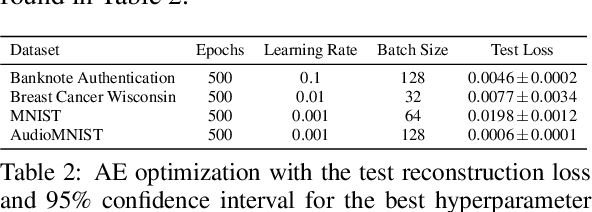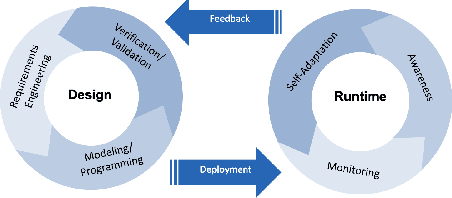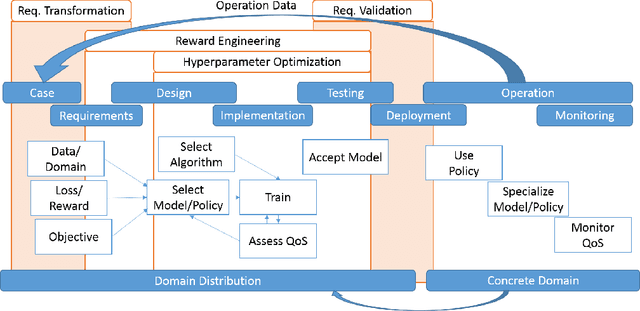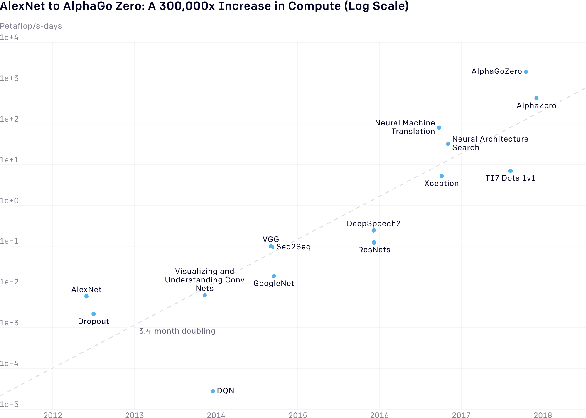Leo Sünkel
LMU Munich
Evaluating Mutation Techniques in Genetic Algorithm-Based Quantum Circuit Synthesis
Apr 08, 2025Abstract:Quantum computing leverages the unique properties of qubits and quantum parallelism to solve problems intractable for classical systems, offering unparalleled computational potential. However, the optimization of quantum circuits remains critical, especially for noisy intermediate-scale quantum (NISQ) devices with limited qubits and high error rates. Genetic algorithms (GAs) provide a promising approach for efficient quantum circuit synthesis by automating optimization tasks. This work examines the impact of various mutation strategies within a GA framework for quantum circuit synthesis. By analyzing how different mutations transform circuits, it identifies strategies that enhance efficiency and performance. Experiments utilized a fitness function emphasizing fidelity, while accounting for circuit depth and T operations, to optimize circuits with four to six qubits. Comprehensive hyperparameter testing revealed that combining delete and swap strategies outperformed other approaches, demonstrating their effectiveness in developing robust GA-based quantum circuit optimizers.
Optimization of Link Configuration for Satellite Communication Using Reinforcement Learning
Jan 14, 2025Abstract:Satellite communication is a key technology in our modern connected world. With increasingly complex hardware, one challenge is to efficiently configure links (connections) on a satellite transponder. Planning an optimal link configuration is extremely complex and depends on many parameters and metrics. The optimal use of the limited resources, bandwidth and power of the transponder is crucial. Such an optimization problem can be approximated using metaheuristic methods such as simulated annealing, but recent research results also show that reinforcement learning can achieve comparable or even better performance in optimization methods. However, there have not yet been any studies on link configuration on satellite transponders. In order to close this research gap, a transponder environment was developed as part of this work. For this environment, the performance of the reinforcement learning algorithm PPO was compared with the metaheuristic simulated annealing in two experiments. The results show that Simulated Annealing delivers better results for this static problem than the PPO algorithm, however, the research in turn also underlines the potential of reinforcement learning for optimization problems.
Towards Transfer Learning for Large-Scale Image Classification Using Annealing-based Quantum Boltzmann Machines
Nov 27, 2023



Abstract:Quantum Transfer Learning (QTL) recently gained popularity as a hybrid quantum-classical approach for image classification tasks by efficiently combining the feature extraction capabilities of large Convolutional Neural Networks with the potential benefits of Quantum Machine Learning (QML). Existing approaches, however, only utilize gate-based Variational Quantum Circuits for the quantum part of these procedures. In this work we present an approach to employ Quantum Annealing (QA) in QTL-based image classification. Specifically, we propose using annealing-based Quantum Boltzmann Machines as part of a hybrid quantum-classical pipeline to learn the classification of real-world, large-scale data such as medical images through supervised training. We demonstrate our approach by applying it to the three-class COVID-CT-MD dataset, a collection of lung Computed Tomography (CT) scan slices. Using Simulated Annealing as a stand-in for actual QA, we compare our method to classical transfer learning, using a neural network of the same order of magnitude, to display its improved classification performance. We find that our approach consistently outperforms its classical baseline in terms of test accuracy and AUC-ROC-Score and needs less training epochs to do this.
Disentangling Quantum and Classical Contributions in Hybrid Quantum Machine Learning Architectures
Nov 09, 2023



Abstract:Quantum computing offers the potential for superior computational capabilities, particularly for data-intensive tasks. However, the current state of quantum hardware puts heavy restrictions on input size. To address this, hybrid transfer learning solutions have been developed, merging pre-trained classical models, capable of handling extensive inputs, with variational quantum circuits. Yet, it remains unclear how much each component - classical and quantum - contributes to the model's results. We propose a novel hybrid architecture: instead of utilizing a pre-trained network for compression, we employ an autoencoder to derive a compressed version of the input data. This compressed data is then channeled through the encoder part of the autoencoder to the quantum component. We assess our model's classification capabilities against two state-of-the-art hybrid transfer learning architectures, two purely classical architectures and one quantum architecture. Their accuracy is compared across four datasets: Banknote Authentication, Breast Cancer Wisconsin, MNIST digits, and AudioMNIST. Our research suggests that classical components significantly influence classification in hybrid transfer learning, a contribution often mistakenly ascribed to the quantum element. The performance of our model aligns with that of a variational quantum circuit using amplitude embedding, positioning it as a feasible alternative.
Hybrid Quantum Machine Learning Assisted Classification of COVID-19 from Computed Tomography Scans
Oct 04, 2023



Abstract:Practical quantum computing (QC) is still in its infancy and problems considered are usually fairly small, especially in quantum machine learning when compared to its classical counterpart. Image processing applications in particular require models that are able to handle a large amount of features, and while classical approaches can easily tackle this, it is a major challenge and a cause for harsh restrictions in contemporary QC. In this paper, we apply a hybrid quantum machine learning approach to a practically relevant problem with real world-data. That is, we apply hybrid quantum transfer learning to an image processing task in the field of medical image processing. More specifically, we classify large CT-scans of the lung into COVID-19, CAP, or Normal. We discuss quantum image embedding as well as hybrid quantum machine learning and evaluate several approaches to quantum transfer learning with various quantum circuits and embedding techniques.
SEQUENT: Towards Traceable Quantum Machine Learning using Sequential Quantum Enhanced Training
Jan 06, 2023



Abstract:Applying new computing paradigms like quantum computing to the field of machine learning has recently gained attention. However, as high-dimensional real-world applications are not yet feasible to be solved using purely quantum hardware, hybrid methods using both classical and quantum machine learning paradigms have been proposed. For instance, transfer learning methods have been shown to be successfully applicable to hybrid image classification tasks. Nevertheless, beneficial circuit architectures still need to be explored. Therefore, tracing the impact of the chosen circuit architecture and parameterization is crucial for the development of beneficially applicable hybrid methods. However, current methods include processes where both parts are trained concurrently, therefore not allowing for a strict separability of classical and quantum impact. Thus, those architectures might produce models that yield a superior prediction accuracy whilst employing the least possible quantum impact. To tackle this issue, we propose Sequential Quantum Enhanced Training (SEQUENT) an improved architecture and training process for the traceable application of quantum computing methods to hybrid machine learning. Furthermore, we provide formal evidence for the disadvantage of current methods and preliminary experimental results as a proof-of-concept for the applicability of SEQUENT.
The Holy Grail of Quantum Artificial Intelligence: Major Challenges in Accelerating the Machine Learning Pipeline
Apr 29, 2020



Abstract:We discuss the synergetic connection between quantum computing and artificial intelligence. After surveying current approaches to quantum artificial intelligence and relating them to a formal model for machine learning processes, we deduce four major challenges for the future of quantum artificial intelligence: (i) Replace iterative training with faster quantum algorithms, (ii) distill the experience of larger amounts of data into the training process, (iii) allow quantum and classical components to be easily combined and exchanged, and (iv) build tools to thoroughly analyze whether observed benefits really stem from quantum properties of the algorithm.
 Add to Chrome
Add to Chrome Add to Firefox
Add to Firefox Add to Edge
Add to Edge